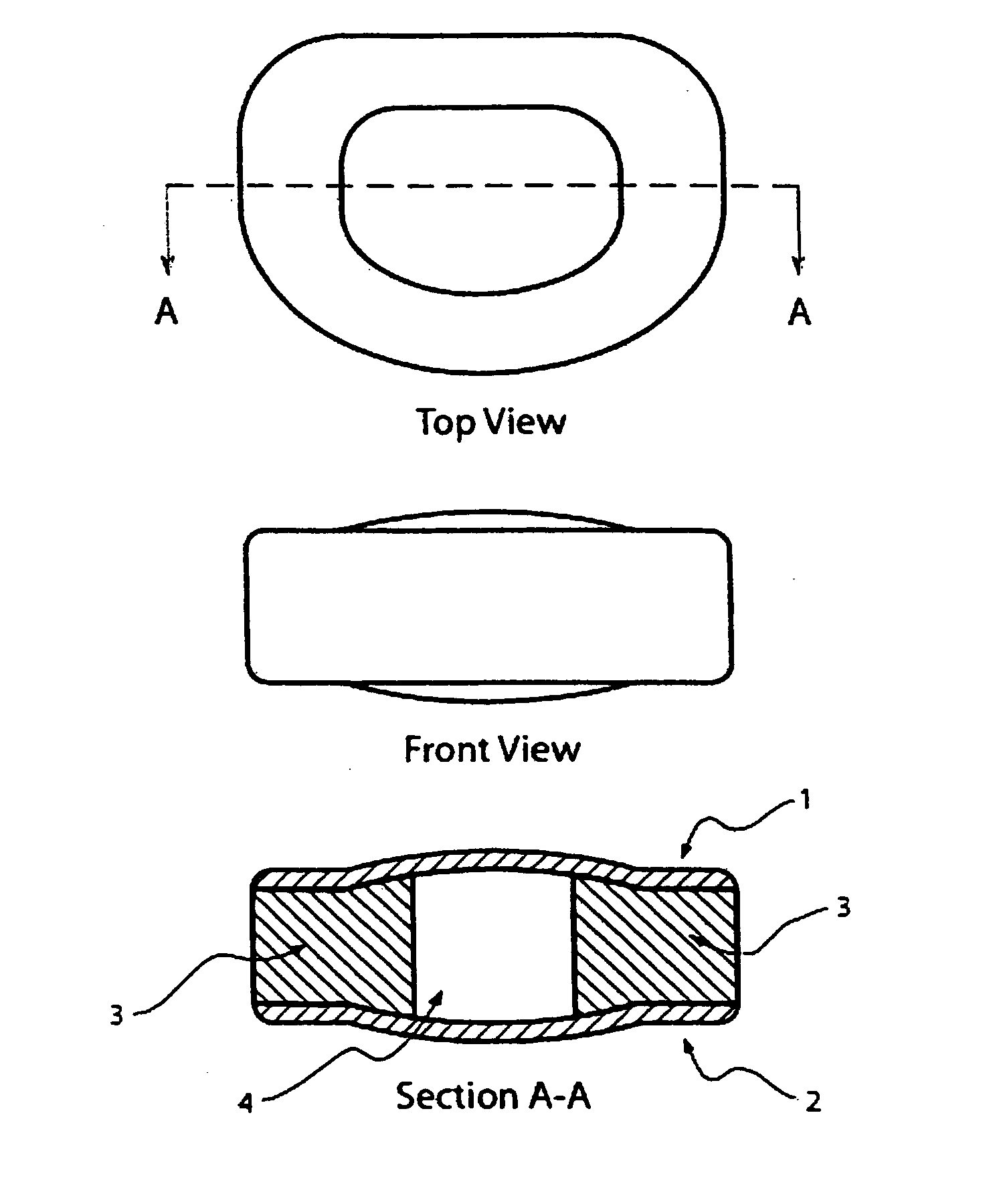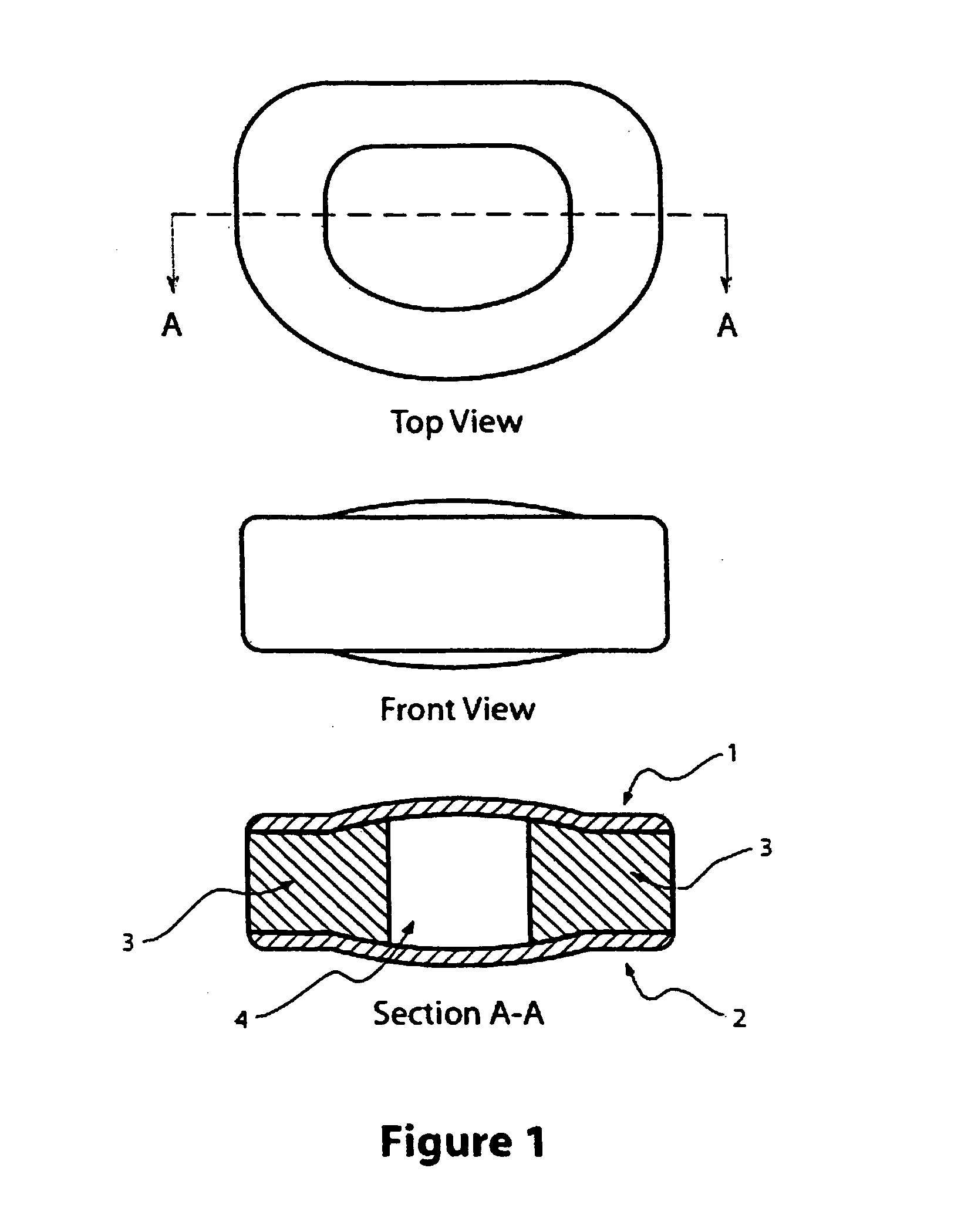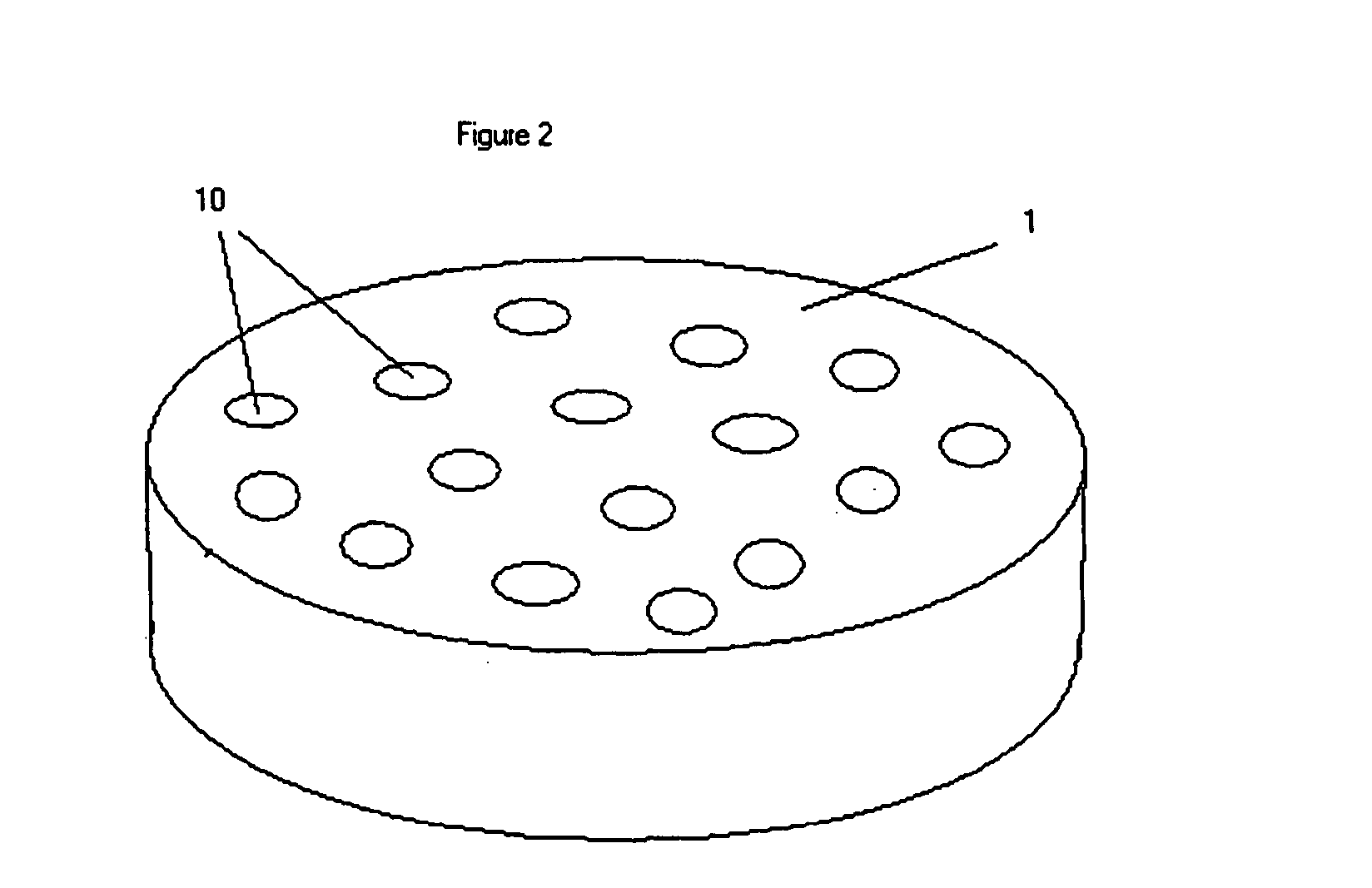Load bearing biocompatible device
a biocompatible, load-bearing technology, applied in the field of spinal disc replacement devices, can solve the problems of inability to vary independently, pore size and porosity, and the density of the pores within the hydrogel is relatively non-porous,
- Summary
- Abstract
- Description
- Claims
- Application Information
AI Technical Summary
Benefits of technology
Problems solved by technology
Method used
Image
Examples
example 1
Attachment of Polystyrene Objects to a Surface
[0049] To a suspension of carboxyl-modified polystyrene beads (20.3 μm±0.43 μm diameter, Bangs Laboratories) in 20 nM MEW, pH 4.4 is added a 10-fold excess of water-soluble carbodiimide, 1-ethyl-3-(d-dimethyylaminopropyl) carbodiimide hydrochloride. After 15 minutes at room temperature, the beads are washed twice by centrifugation and suspension in 20 mM HEPES, pH 7.5 and then resuspended in the same buffer. The resulting suspension is added to the wells of a 24-well tissue culture plate made of polycarbonate, having an amino-modified surface (Nalge Nunc International). After 60 minutes at room temperature, the unreacted beads are decanted, and the wells are washed gently with deionized water. Microscopic analysis shows the bottom surface of the wells are covered with a monolayer of polystyrene beads at a density of approximately 50%.
[0050] The surface with attached polystyrene objects of the previous example may be used as a template ...
example 2
Construction of a PVA-H With Surface Topography for Implantation as a Spinal Disc Prosthesis
[0052] A two-part mold with inserts is used to produce the artificial disc depicted in FIG. 1. The upper and lower halves of the mold are first separated to mold the upper and lower surface regions of the disc. The surface of each corresponding upper and lower surface is created by suspending in the aqueous hydrogel the objects for creating the superficial pores. That suspension is then poured into the well of a mold at a depth no greater than the desired depth of the superficial pores. That layer of hydrogel is allowed to polymerize and crosslink. From that base layer creating the outermost layer of the corresponding surface, the remainder of the bulk of the hydrogel substrate can be built up by adding additional depth of aqueous hydrogel.
[0053] A 30% w / w poly(vinyl alcohol) solution is prepared by mixing poly(vinyl alcohol) polymer (124,000-186,000 Av. MW, 99+% saponification, Aldrich Che...
PUM
| Property | Measurement | Unit |
|---|---|---|
| diameter | aaaaa | aaaaa |
| diameter | aaaaa | aaaaa |
| diameter | aaaaa | aaaaa |
Abstract
Description
Claims
Application Information
 Login to View More
Login to View More - R&D
- Intellectual Property
- Life Sciences
- Materials
- Tech Scout
- Unparalleled Data Quality
- Higher Quality Content
- 60% Fewer Hallucinations
Browse by: Latest US Patents, China's latest patents, Technical Efficacy Thesaurus, Application Domain, Technology Topic, Popular Technical Reports.
© 2025 PatSnap. All rights reserved.Legal|Privacy policy|Modern Slavery Act Transparency Statement|Sitemap|About US| Contact US: help@patsnap.com



